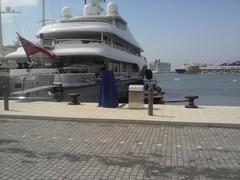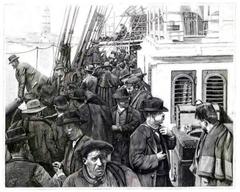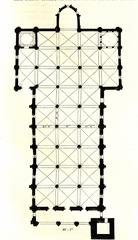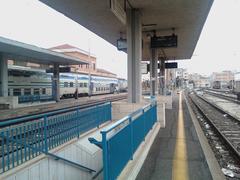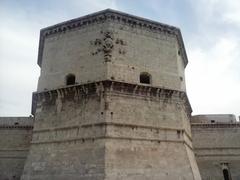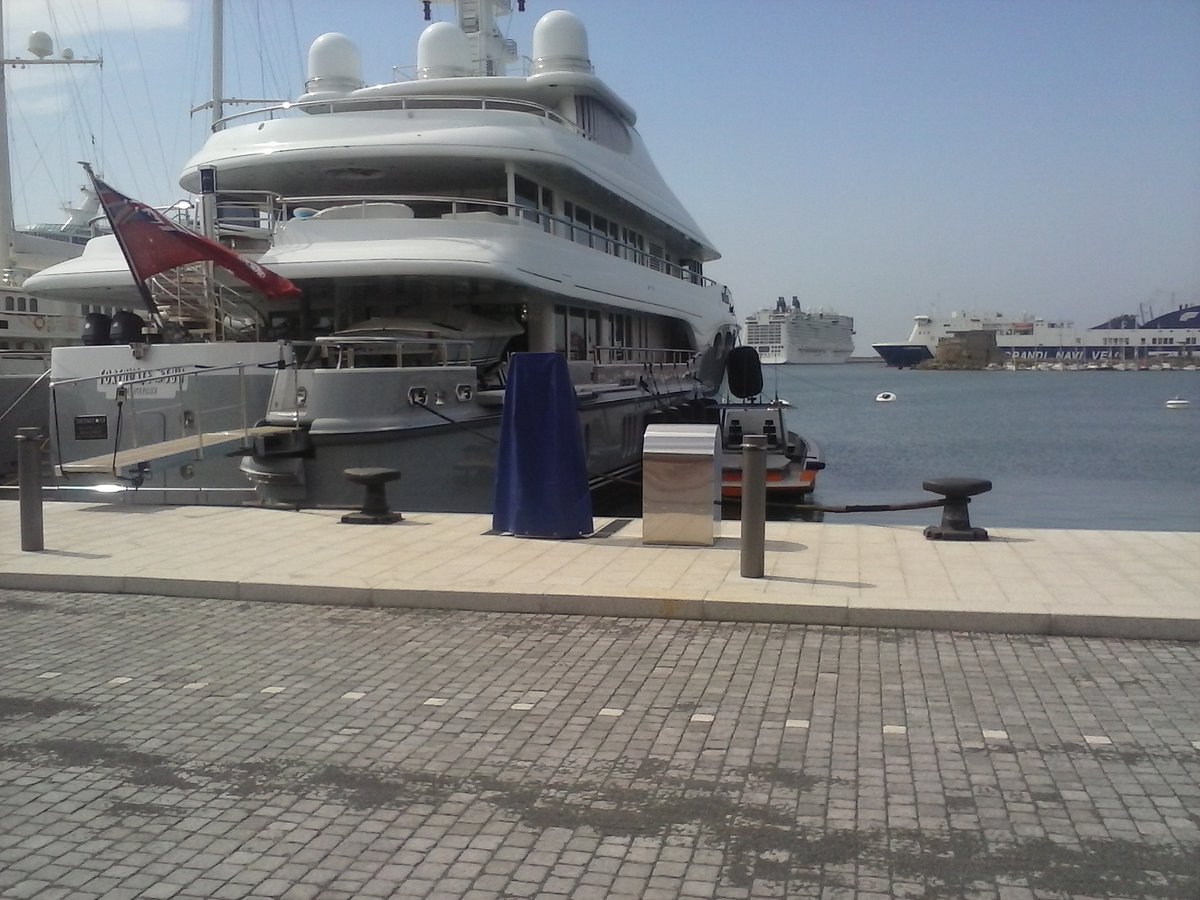
Port of Civitavecchia Visiting Hours, Tickets, and Travel Guide
Date: 15/06/2025
Introduction
The Port of Civitavecchia, known as the “Port of Rome,” is Italy’s busiest cruise port and a major gateway to the Eternal City. Situated about 70–80 kilometers northwest of Rome on the Tyrrhenian Sea, this port blends ancient heritage with modern infrastructure. From its Roman origins, commissioned by Emperor Trajan, to its Renaissance fortifications and contemporary cruise terminals, Civitavecchia offers travelers a seamless blend of history, convenience, and vibrant Italian culture. This guide provides comprehensive information on visiting hours, ticket options, transportation, and the best ways to explore both Civitavecchia and nearby Rome, ensuring an enriching experience for every visitor (aswesawit.com; civitavecchia.portmobility.it; transferservicerome.com).
Table of Contents
- Introduction
- Historical Overview
- Planning Your Visit: Hours, Tickets, and Practical Info
- Port Layout, Cruise Terminals, and Facilities
- Getting to and Around Civitavecchia
- Architectural, Archaeological, and Cultural Highlights
- Nearby Attractions and Day Trips
- Essential Visitor Tips and FAQs
- Conclusion and References
Historical Overview
Roman Origins and Ancient Development
Civitavecchia’s history dates back to the early 2nd century AD, when Emperor Trajan commissioned the port as a replacement for the silted harbor of Ostia. Designed by Apollodorus of Damascus, the port featured a nearly circular basin, robust piers, and defensive towers such as the Bicchiere and Lazzaretto, which still stand today (portofrome.it; wikipedia.org). The area’s ancient name, Centumcellae, refers to the multitude of natural and man-made chambers lining the shore, used for ship shelter and storage.
The port served both commercial and military functions, with Roman fleet detachments stationed here. The region became a retreat for the elite, dotted with villas and fishponds that underscore its strategic and leisurely appeal (portofrome.it).
Medieval and Renaissance Eras
Following the decline of the Roman Empire, Civitavecchia faced invasions and population shifts. The city’s strategic location made it a target for Saracen pirates and rival states, which led to the strengthening of fortifications. The Renaissance brought the construction of Fort Michelangelo, a monumental defensive structure designed by Bramante and completed with input from Michelangelo (incitur.com). This fort remains a dominant feature of the port’s waterfront.
Modernization and Contemporary Significance
In the 19th and 20th centuries, the arrival of the railway transformed Civitavecchia into a commercial hub (e-civitavecchia.com). World War II caused heavy destruction, but postwar rebuilding modernized the port. Today, Civitavecchia is the busiest cruise port in Italy, handling millions of passengers annually and connecting mainland Italy to Sardinia, Sicily, North Africa, Spain, and France (wikipedia.org).
The port continues to expand and modernize, with ongoing improvements in passenger and cargo facilities and a focus on sustainable maritime connections (portofrome.it).
Planning Your Visit: Hours, Tickets, and Practical Info
Visiting Hours
- Port Access: The port is open daily, typically from early morning until late evening, aligning with cruise and ferry schedules.
- Fort Michelangelo: Tuesday to Sunday, 9:00 AM–6:00 PM; closed Mondays.
- Taurine Baths Archaeological Park: Open daily, 9:00 AM–7:00 PM.
- Civitavecchia Cathedral: Open daily, 8:00 AM–7:00 PM.
Always verify seasonal changes or holiday hours on official websites.
Tickets and Guided Tours
- Port Entry: Free general access; entry fees apply for specific attractions.
- Fort Michelangelo: €5 general admission; discounts for seniors/children. Guided tours available.
- Taurine Baths: €4 per person.
- Museum: €6 entry; reduced rates available.
- Guided Tours: Book through local operators or port visitor centers, especially during peak seasons (civitavecchia.portmobility.it).
Accessibility
Port terminals and most major sites are wheelchair accessible, with ramps, elevators, and adapted restrooms. Some archaeological sites may have limited access.
Special Events
Civitavecchia hosts maritime festivals, concerts, and naval exhibitions throughout the year. Visit the Port Mobility events page for schedules.
Port Layout, Cruise Terminals, and Facilities
Port Layout and Zones
Spanning 2,000,000 square meters, the port is organized into:
- Southern Area: Home to cruise terminals, Fort Michelangelo, Marina Yachting, and the Roman Dock.
- Northern Area: Dedicated to commercial shipping, cargo, and ferry operations (Port Mobility).
Cruise Terminals
- Amerigo Vespucci Terminal: Modern facility for embarkation/disembarkation.
- Terminals 10, Bramante/12S, and 25S: Managed by Roma Cruise Terminal SRL.
- Upcoming Terminal at Pier 12 bis: Expanding cruise capacity (CruiseMapper).
Berths and Docking
Seven cruise-specific berths (3.2 km total), with depths up to 16 meters, accommodate the world’s largest vessels (MarineLink).
Passenger Mobility
- Shuttle Buses: Free shuttles connect cruise terminals, parking lots, and Largo della Pace, the main entry point (Port Mobility).
- Information Points: Located throughout the port for directions and assistance.
- Parking: Cruise and Nord parking lots available inside the port.
Amenities
- Luggage Storage: Available at the port and train station.
- ATMs, Currency Exchange, Wi-Fi: Widely available in terminals.
- Customer Assistance: Information desks offer multilingual support.
- Accessibility: Ramps, elevators, and adapted services for passengers with reduced mobility.
Getting to and Around Civitavecchia
From Rome and Airports
- Train: Regional trains from Roma Termini/Ostiense to Civitavecchia (50–60 minutes, from €5). The Civitavecchia Express offers limited direct departures (tripsavvy.com).
- Private Transfer: Door-to-door service from Rome or airports starting at €130 (travelmustdos.com).
- Taxi: Fixed rates (€130 from Fiumicino, €150 from central Rome) (tourist-in-rom.com).
- Bus: COTRAL buses connect Rome and Civitavecchia (longer journey).
- Car: A12 highway or Via Aurelia; parking at Parcheggio Bramante (tourist-in-rom.com).
From Civitavecchia Station to the Port
- Shuttle Bus: €6 per ride, connects station to cruise terminals (travelmustdos.com).
- Taxi: €15–20; advisable to pre-book on busy cruise days.
Local Transportation
- Walking: Feasible for many attractions in the city center.
- Local Buses & Taxis: Recommended for reaching sites outside the center (e.g., Taurine Baths, Aquafelix).
Architectural, Archaeological, and Cultural Highlights
Fort Michelangelo
A Renaissance fortress built to defend the port from attacks, with a central tower attributed to Michelangelo. Offers panoramic views of the harbor and city (civitavecchia.portmobility.it).
Taurine Baths
Ancient Roman thermal complex renowned for well-preserved ruins, mosaics, and pools.
Civitavecchia Cathedral
Baroque church dedicated to Saint Francis of Assisi, open daily with free entry.
Other Churches
- Church of the Oration and Death
- Church of the Star
- Sanctuary of the Immaculate Conception
- Church of the Holy Japanese Martyrs
National Archaeological Museum
Housed in a former papal building, featuring artifacts from Etruscan, Roman, and medieval periods.
Old Town & The Ghetto
Wander narrow streets, visit local markets, and discover traditional eateries in these vibrant districts.
Amerigo Vespucci Tall Ship
The legendary training ship regularly docks in Civitavecchia and opens for public tours during select dates (Vespucci Tour).
Aquafelix Water Park
Popular family-friendly destination with slides and pools, located just outside the city.
Nearby Attractions and Day Trips
- Rome: Easy train access for day trips to the Colosseum, Vatican, and other landmarks.
- Etruscan Sites: Tarquinia and surrounding archaeological parks.
- Bracciano Lake: Scenic destination with a medieval castle.
- Local Beaches: Relax along the Tyrrhenian coast before or after your cruise (tourist-in-rom.com).
Essential Visitor Tips and FAQs
Practical Tips
- Arrive Early: Especially on cruise embarkation days.
- Advance Booking: Reserve transfers, parking, and tours ahead of time.
- Cash: Keep small euro denominations for shuttle buses and minor purchases.
- Safety: Civitavecchia is generally safe, but secure valuables and keep travel documents handy.
- Connectivity: Free Wi-Fi is available in most terminals; local SIM cards are easy to obtain.
Frequently Asked Questions
Q: What are the Civitavecchia port visiting hours?
A: The port is generally open from early morning to late evening. Attractions like Fort Michelangelo and Taurine Baths have specific hours.
Q: Do I need tickets to enter the port?
A: No general admission ticket is needed. Tickets are required for specific attractions, shuttle buses, and certain tours.
Q: How do I get from Civitavecchia port to Rome?
A: Frequent trains from Civitavecchia Station reach Rome Termini in under an hour.
Q: Is the port accessible for travelers with disabilities?
A: Yes, with ramps, elevators, and adapted services throughout the port.
Q: Are guided tours available?
A: Yes, guided tours for the port, Civitavecchia, and Rome are offered; book in advance for popular dates (transferservicerome.com).
Conclusion
Civitavecchia is a living testament to nearly two millennia of maritime history, seamlessly connecting ancient Roman engineering, Renaissance grandeur, and modern travel convenience. As Italy’s premier cruise port, it offers travelers efficient facilities, accessible services, and a wealth of cultural treasures. With strategic planning, including knowledge of visiting hours, ticketing, and transportation, your visit can be both smooth and memorable.
For the latest updates, tour bookings, and local insights, consult the official port website and consider using the Audiala app to enhance your travel experience. Whether stopping for a cruise, exploring Civitavecchia’s charming old town, or venturing to Rome’s historic heart, you’ll find this port city a vibrant and essential gateway to Italy’s past and present.
References and Useful Links
- Civitavecchia Attractions: aswesawit.com
- Port Mobility - Official Port Information
- Top 10 Things to See: Port Mobility
- Civitavecchia Port Visitor Guide: transferservicerome.com
- Wikipedia: Port of Civitavecchia
- Flannels or Flipflops: Guide to Civitavecchia Cruise Port
